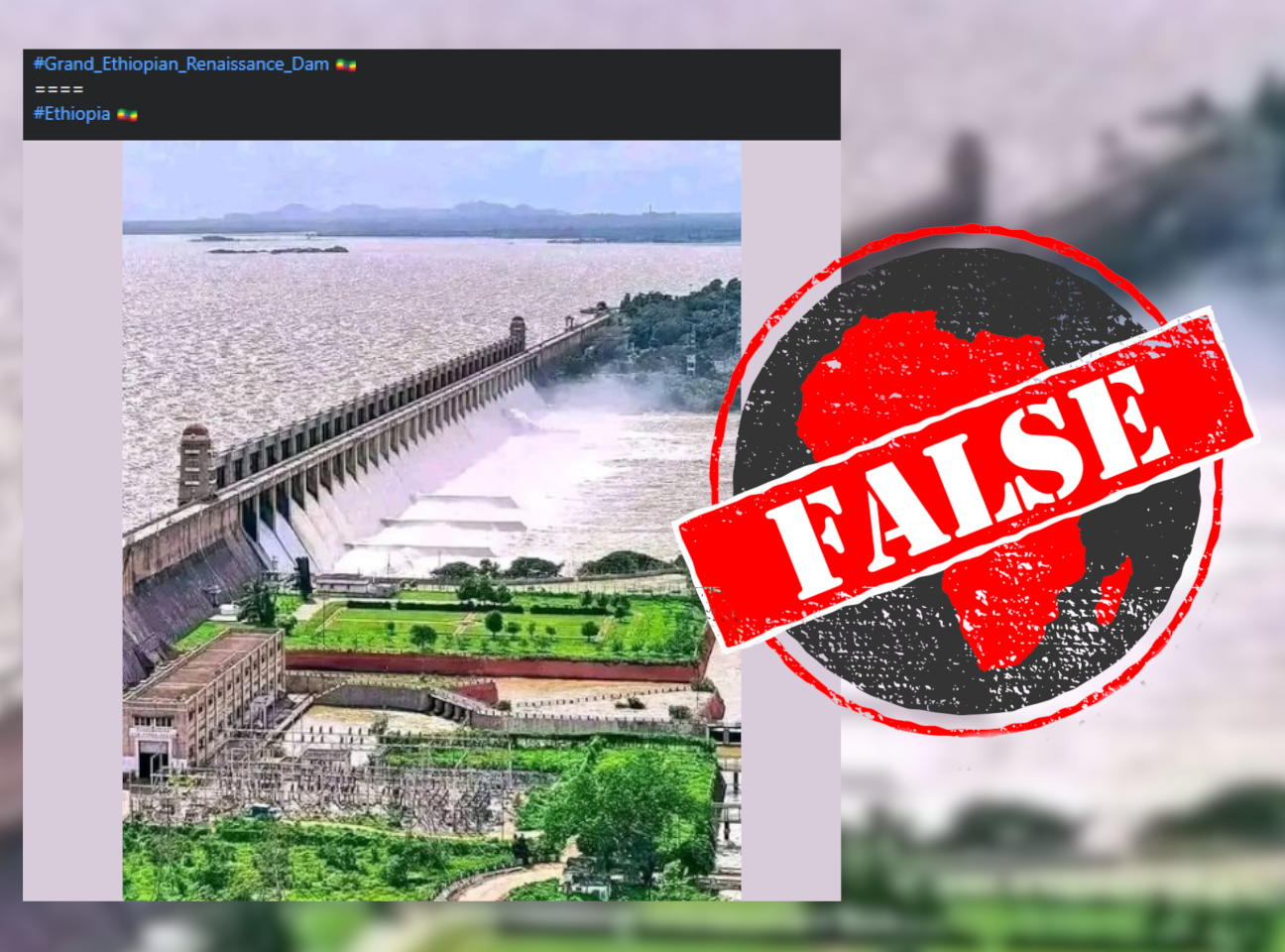IN SHORT: On 6 March 2024, it was announced that the Grand Ethiopian Renaissance Dam was nearly complete. But a photo circulating on social media does not show the controversial project, but instead a dam in southwestern India.
The huge Grand Ethiopian Renaissance Dam (Gerd) on the Blue Nile River, more than half a century in the making and a source of tension between Ethiopia and Egypt, is 95% complete.
This was announced by the dam’s construction office on 6 March 2024. It said 98% of Gerd’s civil engineering work and 78% of its electromechanical work had been done.
At full capacity, the dam could be the largest hydropower project in Africa, supplying electricity to Ethiopia’s 123 million people and to neighbouring countries.
Soon after the announcement, a photo started circulating on social media with the claim it showed the dam.
In the photo we see water flowing through the sluices of a dam from a huge reservoir that stretches into the distance. In the foreground is some kind of electricity station set in green parkland.
The claim can also be seen here, here, here, here, here and here. But does the photo really show the Grand Ethiopian Renaissance Dam?

Who owns the waters of the Nile?
The Nile River flows northward from Sudan, Ethiopia’s western neighbour, through Egypt into the Mediterranean Sea.
Its major tributaries are the Blue Nile, which rises from Lake Tana in the eastern Ethiopian highlands, and the White Nile, which begins at Lake Victoria to the south. The two rivers meet to form the Nile in Khartoum, Sudan’s capital.
The Blue Nile is the larger of the two and supplies about 90% of Egypt’s fresh water. Gerd’s massive reservoir has a capacity of about 1.6 years’ worth of the Blue Nile’s average flow.
In September 2023 Ethiopia announced that the fourth and final filling of Gerd’s reservoir was complete.
A feasibility study on Gerd was first conducted in the 1950s. Ethiopia began actual construction in 2011, the year Egypt was in turmoil during the pro-democracy protests known as the Arab Spring.
Since then, the two countries have repeatedly been at loggerheads over the dam. Egypt sees it as a threat to its water supply, especially during drought. But for Ethiopia Gerd holds obvious benefits.
Ethiopia has recently gone so far as to deploy its army around Gerd and install air defence systems to protect the dam from possible attacks by Egypt.
Tungabhadra Dam in India’s Karnataka state
A reverse image search revealed that the photo is actually of the Tungabhadra Dam in India.
The photo has been posted on news websites, blogs, travel sites and social media as far back as 2019. All identify it as the Tungabhadra Dam.
The dam, also known as Pampa Sagar, lies on the Tungabhadra River outside the city of Hosapete in the southwestern Indian state of Karnataka. It’s the state’s largest dam, providing irrigation, electricity and flood control.
The photo does not show the Grand Ethiopian Renaissance Dam.
Republish our content for free
For publishers: what to do if your post is rated false
A fact-checker has rated your Facebook or Instagram post as “false”, “altered”, “partly false” or “missing context”. This could have serious consequences. What do you do?
Click on our guide for the steps you should follow.
Publishers guideAfrica Check teams up with Facebook
Africa Check is a partner in Meta's third-party fact-checking programme to help stop the spread of false information on social media.
The content we rate as “false” will be downgraded on Facebook and Instagram. This means fewer people will see it.
You can also help identify false information on Facebook. This guide explains how.


Add new comment